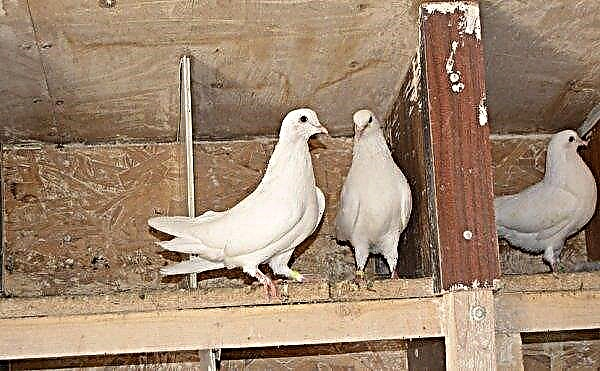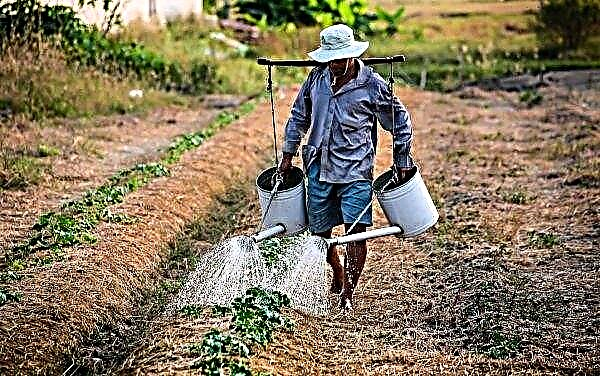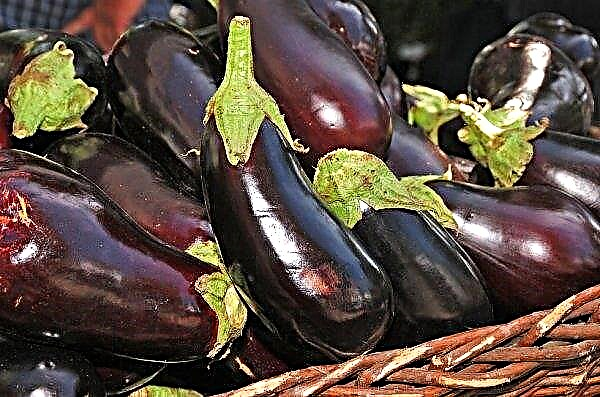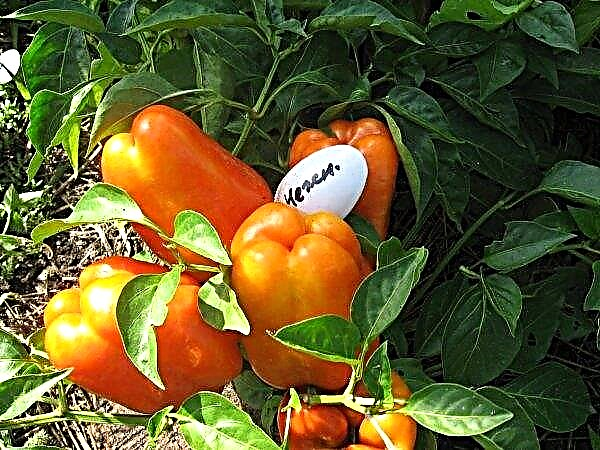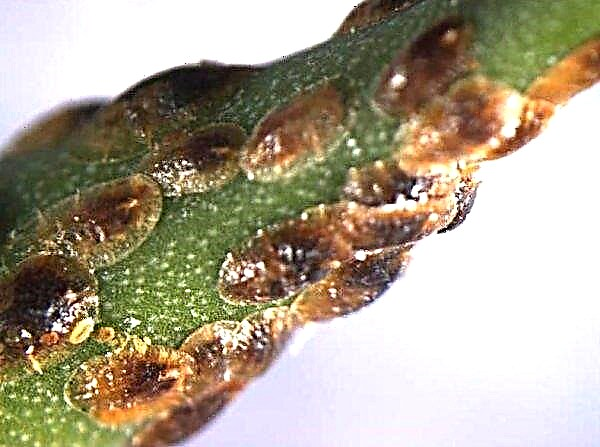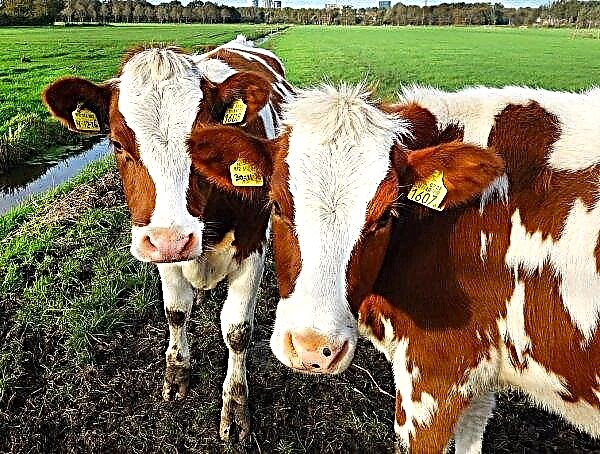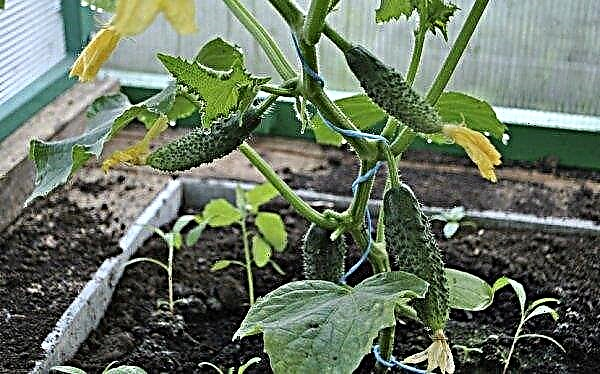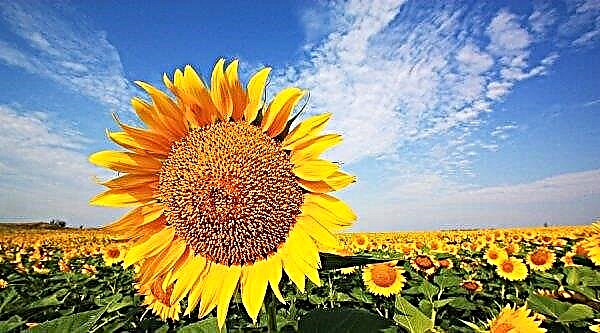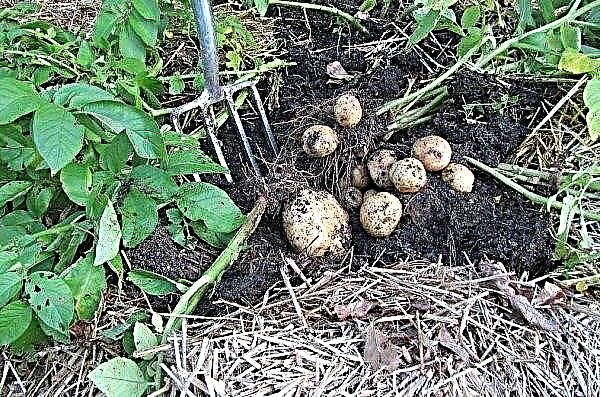In the process of landscaping a summer cottage or courtyard, there is often a need to create an inexpensive, decorative and rapidly growing hedge. Girl’s grapes, better known as “wild”, are suitable for this purpose. How to grow such a creeper in yourself, forcing it to braid a fence or an arbor in a short time, is described in the review below.
Features of growing girl's grapes
Girl's grape (Latin name Parthenocissus), indeed, belongs to the family of grapevines, although outwardly more like ivy. The native land of the plant is North America, although some species (more than a dozen are known) grow in China and Japan.
Did you know? The Latin name of the plant is translated from Greek as “girl’s ivy” (from “παρθενος” - a virgin and “κισσός” - ivy). A comparison of vines with a virgin is explained by the fact that its berries are formed without cross-pollination.
When deciding to plant parthenocissus on the site, it is necessary to take into account the characteristics of the plant, namely:
- Wild grapes propagate quickly and easily “conquer” vast territories. Therefore, it is necessary to plant the plant in such a way that the territory intended for the vine is limited by reliable obstacles (for example, a curb, a wall of a house or other capital construction) and is away from beds and flower beds, especially if light-loving crops are grown on them.
- For the same reason (rapid growth), parthenocissus requires constant cutting and diggingotherwise, its root shoot and aboveground lashes will soon stretch across the entire site.
- For the development and beautiful appearance of the liana needs vertical supporttherefore, the best use for the plant is the creation of a natural hedge from it, densely covered with decorative leaves - bright green in the summer and blood-red in the fall. However, it should be borne in mind that lush overgrowths of lianas acquire quite significant weight over time, so trying to hide unstable and dilapidated structures with it is an unsuccessful idea: an unreliable support may not withstand the load.
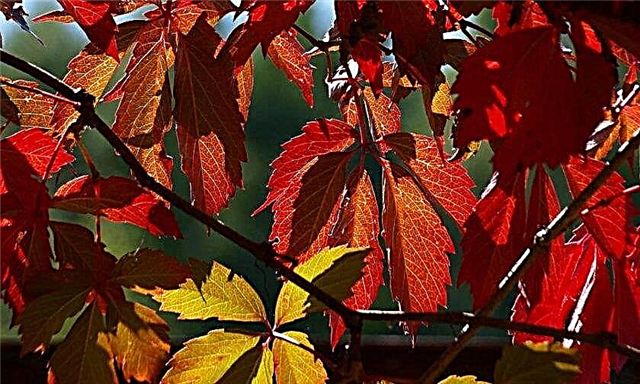
- Girl's grape is an unpretentious plant: It can be grown on poor and depleted soil with a high salt content. The liana does not need abundant watering and top dressing; it is undemanding to sunlight. The only subtlety that needs to be taken into account is that in too shaded areas parthenocissus stays green longer in the autumn and, in addition, under such conditions the liana sometimes does not bear fruit.
- Plant frost resistance is highTherefore, it does not need shelter for the winter. In the case of freezing of individual shoots from substitution buds, new whips are quickly formed; to preserve the decorativeness of the bush, it is only necessary to trim the dead wood to a healthy tissue. In addition, for cultivation in the northern regions, such as the Urals and Siberia, it is better to use special varieties adapted to lower winter temperatures, since removing the hedge from the wall is an ungrateful task.
Important! Contrary to the fears of many summer residents, the fruits of wild grapes are not poisonous: the reason they are not eaten is because they are tasteless and lack nutritional value. And the high content of oxalic acid in the berries is a kind of guarantee that children or pets will not eat them so much as to poison.
Optimum breeding times
Due to the absolute unpretentiousness, girl’s grapes can be successfully planted at any time of the year. The plant perfectly survives in autumn, spring, and summer - provided, of course, that the days are not very hot, otherwise a young plant, especially without shadowing and plentiful watering, may die.
How to propagate girl's grapes?
There are several ways to plant girl's grapes on a plot or balcony. It is easier to do this vegetatively, using cuttings, root branches or side shoots. A longer, although also practiced, option is to sow the seeds of a plant.
Let us consider in more detail each of the mentioned methods.
Cuttings
Cuttings are a common and easy way to make hedges from girl's grapes. In terms of speed and reliability, it is inferior to plant propagation by lateral and root branches, however, to use these two methods, it is necessary that the site already had a ready-made mother plant, whose vitality can be used to root branches.
It is easier to get cuttings during pruning, as at this moment many extra lashes are removed from the plant.
For rooting, it is recommended to use not young, but already woody fragments - their viability is higher.
For rooting, the freshly cut from the mother bush should be inspected and selected on it one or several sections with a thickness of at least 5 mm with 4–5 internodes. The cut should be done by backing 3 cm from the lower kidney.
Ready cuttings can be put into water until the roots are taken out, although many gardeners lower this stage and plant shoots in the ground immediately after pruning.
When planting the cuttings in the ground, two buds must be underground, the rest remain on the surface. In caring for cuttings at the rooting stage, two conditions must be observed - to protect young plants from too bright sun and provide them with regular watering.Important! The roots planted in water in the water die off after planting and are replaced by new ones, so keeping the cuttings in the water does not make sense. The only reason you can resort to such a procedure is the physical inability to plant the shoot in the ground immediately after trimming.
Experienced gardeners recommend cutting parthenocissus in the fall, because during this period young shoots take root better. The second possible option is early autumn, before the start of the period of active sap flow (in the latter case, the young shoot gets less trauma in the process of its separation from the mother bush and, accordingly, is not exposed to the risk of infection so much).
If you want to root the cuttings in the summer, you need to use thicker plant fragments that already have their own lateral branches as planting material. Such cuttings are called hammer-shaped. The advantage of this method is that from the rooted cuttings immediately obtained quickly growing and branched bush.
Video: Propagation of maiden grapes by cuttings
Root layering
Propagation of wild grapes by root layers is even easier than grafting. This method is used when, due to untimely pruning or lack of suitable support, individual stems of the creeper were able to spread along the ground. Such shoots are attached to the soil not with the help of antennae, which the plant uses to stay on the support, but with real roots released from the internodes.
Thus, each bud of the creeper creeping on the ground, in contact with the soil, after a while forms an independent plant, which can develop separately from the mother bush. The gardener needs only two cuts to separate such a seedling from the beginning and end of the lash, then dig it out of the ground with the root and transplant it to a new place, making sure that the root neck remains above the ground.Did you know? The longest liana in the world is a tropical palm tree rattan. With a length of up to three hundred meters, this climbing plant has a trunk whose thickness does not exceed 7 cm.

Side shoots
In order to propagate girl ivy with side shoots, it is necessary to artificially create a situation with the formation of root layers. At the same time, if there is such an opportunity, you should initially lay out the whip so that the rooting takes place in those places where it is planned to plant new plants (for example, stretch a long shoot along the hedge or wall that you want to tighten with liana).
If necessary, in places of expected rooting, the lashes can be attached to the ground with hairpins (they can be made from electrodes, hard wire or wooden bows) and sprinkled with soil, although parthenocissus will quickly begin to take root without additional help.If you extend the liana in such a way that it takes root in the right place, there is no possibility, the side shoots can be safely separated from the mother bush and transplanted next year.

Seeds
The seed method of propagation of wild grapes is rarely used, since it has a large number of disadvantages compared to vegetative methods.
In particular, sowing seeds:
- is a troublesome process, which can not be said about the rooting of cuttings, layering and side shoots;
- allows you to get an adult plant in the longer term;
- does not guarantee the preservation of parental traits in the new creeper, which should be taken into account when propagating hybrid forms of parthenocissus.
Important! The ability of wild grapes to sprout and root easily extends to its seeds. Since they have excellent germination, it is necessary to ensure that the fruits of parthenocissus do not crumble to the ground and do not remain lying on it until spring, otherwise next year they will turn the site into impenetrable jungle.
Seed propagation of girl’s ivy technologically looks like this:
- Completely ripened fruits are removed from the bush.
- The berry is opened and the seeds are extracted from it.
- Planting seeds is possible in two ways: immediately after collection or next spring. In the first case, germination takes a little longer, usually the first shoots appear only in June. To accelerate the process, spring sowing with preliminary stratification is used (this term is used to specially simulate wintering of seeds in the soil): approximately two weeks before the expected sowing date, the seeds are soaked for several hours in cool water, wrapped in several layers of wet gauze wrapped with polyethylene, and placed in the vegetable section of the refrigerator. Instead of gauze, you can use well-moistened sand or peat.
- Sown seeds both in open ground and in containers for seedlings. Depending on the chosen method, the period of spring planting can vary from February to April.
- Bury the seeds in the soil to a depth of 10 mm.
- At the stage of germination, make sure that the soil does not dry out, and also protect young shoots from direct sunlight.
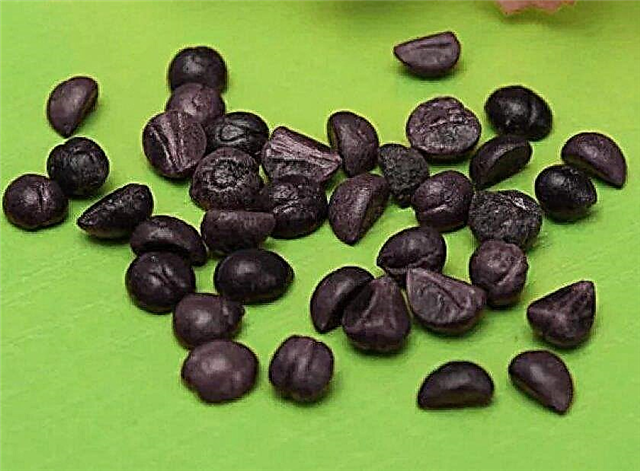
Subsequent grape care
Caring for young vines is simple.
All that is needed for this:
- regular watering (as the topsoil dries up);
- protection against bright light;
- garter (an adult plant easily finds a support and attaches to it, but young shoots need help and direct them correctly);
- top dressing (twice a season organic and complex nitrogen-phosphorus-potassium fertilizers like nitroammophoski can be added to the soil, this will accelerate the growth of lianas);
- pruning (in addition to the sanitary purpose, this procedure also stimulates the branching of the bush and more active development).
Did you know? The world record for the growth rate is bamboo - in a day it can add up to 70 cm in length. The growth of girl’s grapes is much slower, but this vine gives an impressive increase — annual rate from 2 to 4 meters!
When forming a bush, you must follow these rules:
- It is important at the initial stages to properly build the "skeleton" of the plant, directing new shoots using special supports along the desired path.
- "Naughty" branches, stubbornly unfold in an undesirable direction, must be removed immediately. From this harm the bush will not, on the contrary, its growth will accelerate.
- In the future, care for the liana should consist only of sanitary pruning of dead and damaged shoots in the spring and summer removal of excess lashes that violate the decorative hedge. Also, in order to avoid uncontrolled growth, it is necessary to prevent the emergence of creeping shoots on the ground and numerous basal shoots, which, inter alia, are formed as a result of germination of last year's seeds.
Video: Useful and beautiful girl's grapes



